
A couple of years ago, we received a question about “long, thick, black, and spiky caterpillars with white dashes and an orange stripe.” This is more or less how the reader described the creature he found, which he called a “worm.” We were confident that our reader found a caterpillar and not a worm, but without a picture, we struggled to identify the specific species of caterpillar. Then, about a year after we wrote this article, another reader sent us a picture of a spiky caterpillar with an orange stripe that matched the above description. Both readers are from South Africa, so we were fairly sure that they were dealing with the same caterpillar, yet we still weren’t able to say exactly what species of caterpillar our reader found. At long last, however, we think we have arrived at an answer: the orange and black caterpillar with spikes is an African Emperor Caterpillar (Bunaea alcinoe), which is also called a Cabbage Tree Emperor Caterpillar.
First, let’s take a look at the caterpillar in question, which is a creature to behold:
Although we can’t necessarily infer this based on this image alone, which lacks a scale, the caterpillar pictured is probably fairly large by larval standards. (Caterpillars are the larval forms of butterflies and moths, for the record.) African Emperor Caterpillars are generally around three inches (seven to eight centimeters) long and over a half an inch (1.5 centimeters) in diameter. Although they look fairly scary, they aren’t poisonous, but one should always exercise some caution in picking up caterpillars because they can cause skin irritation.
Like all moths and butterflies (including, of course, their larval forms), African Emperor caterpillars belong to the Lepidoptera order. Within this order is the Saturniidae family, to which the African Emperors belong. There are over 2,000 species in this family, including other species of emperor moths, as well as giant silkmoths and royal moths. The moths in the Saturniidae family tend to have relatively large wingspans. This is striking, because apart from their size, saturniids (as members of the Saturniidae family are called) tend to have vivid eyespots on their wings. The eyespots are a defense mechanism that can, among other things, deter potential predators from attacking.
So, after nearly two years, we can finally put this question to rest. The spiky, black, and orange caterpillars found in South Africa are African Emperor Caterpillars.
All About Worms is always free, always reader-supported. Your tips via CashApp, Venmo, or Paypal are appreciated! Receipts will come from ISIPP Publishing.



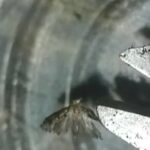
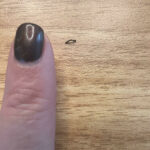

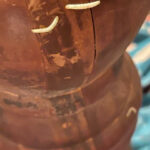
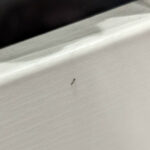
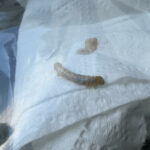
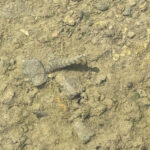






We live in Pietermaritzburg, I have about 40-50 of these caterpillars hatch each year in my garden today again. I would really like to know what they feed on as I don’t like using poisons so I catch the lot and release in a natural environment. We don’t have a cabbage tree but mostly indigenous plant garden. I don’t want them eating my cycads the new frons keep being destroyed each year. Please advise if anyone knows Thanks Eve
We are currently in the Drakensberg KZN and found these African Emporer Catepillars in our Kiepersol tree.
I live in East London in the Eastern Cape on a property that has a private nature reserve adjacent to it. While walking in the garden this afternoon, I came across no less than fifteen of these caterpillars crossing the lawn. In my 10yrs here, I’ve never seen anything like them before. Quite spectacular.
I found one of these by our guava tree, and had been researching it for days. But, as you may know, they aren’t just in South Africa, are they? I found this one in Uganda. Thanks for the information on this website!
We have an invasion of this African Emperor cabbage tree caterpilar. Having totally stripped our cabbage tree they’re now looking further afield for leaves. Does anyone know if they’re likely to demolish the King Protea we have in the same area? I’d be hard pressed not to fry them in oil and serve wiith a chilly dip if they do!!
Hi,
I live in Northern Uganda and we are seeing many of these guys. The biggest wave was about two weeks ago and there’s another large group emerging now. I’ve also seen several adults during my two years in Uganda. Beautiful!
Hi Anne,
I also live in Hillcrest and noticed these large black caterpillars in my neighbour’s cabbage tree. There are hundreds of them that have been chomping the leaves, and the driveway underneath the tree is solidly littered with the caterpillar poo. This morning I noticed some of them crossing my driveway, and on closer investigation there is currently a mass migration of these fat caterpillars coming down the tree trunk…I presume that they are all now looking for somewhere safe to pupate. I googled ‘mopane worm’ and discovered that this particular white-spiked black caterpillar is the African Emperor Moth. And they particularly like the cabbage tree.
All the best, Sue
We live in Hillcrest KZN and have just seen about 10 of these caterpillars lying on the road and wondered which tree they are commonly found in and would a strong wind result in so many of them ending up on the road..